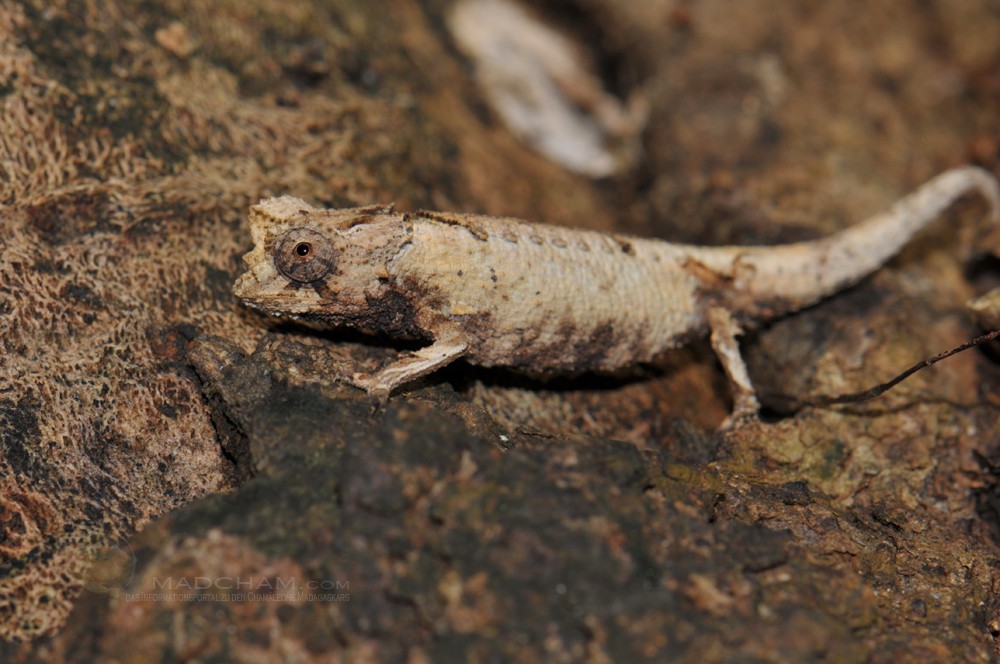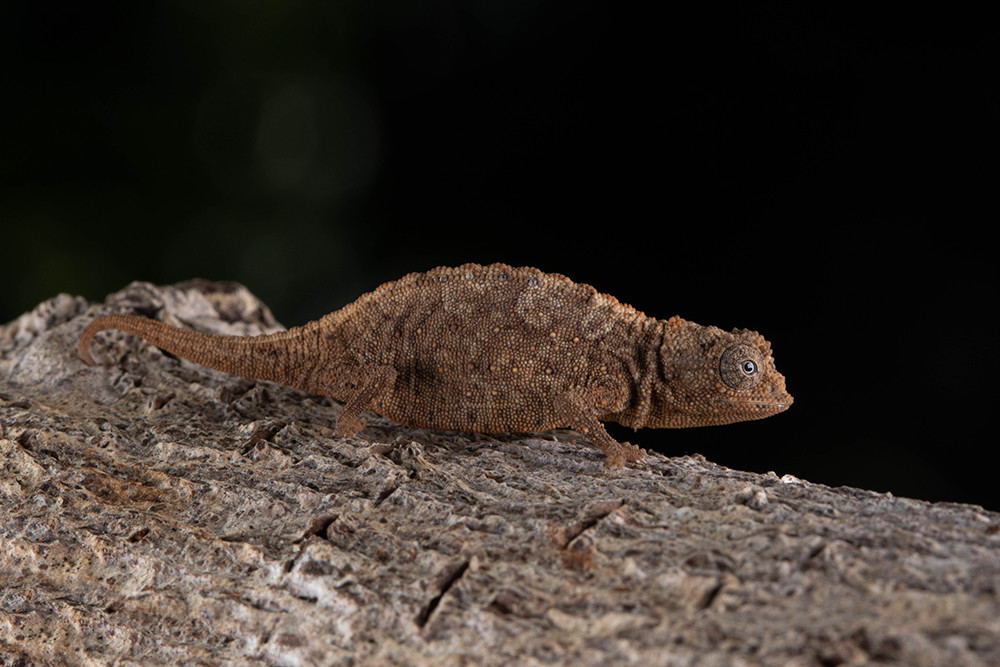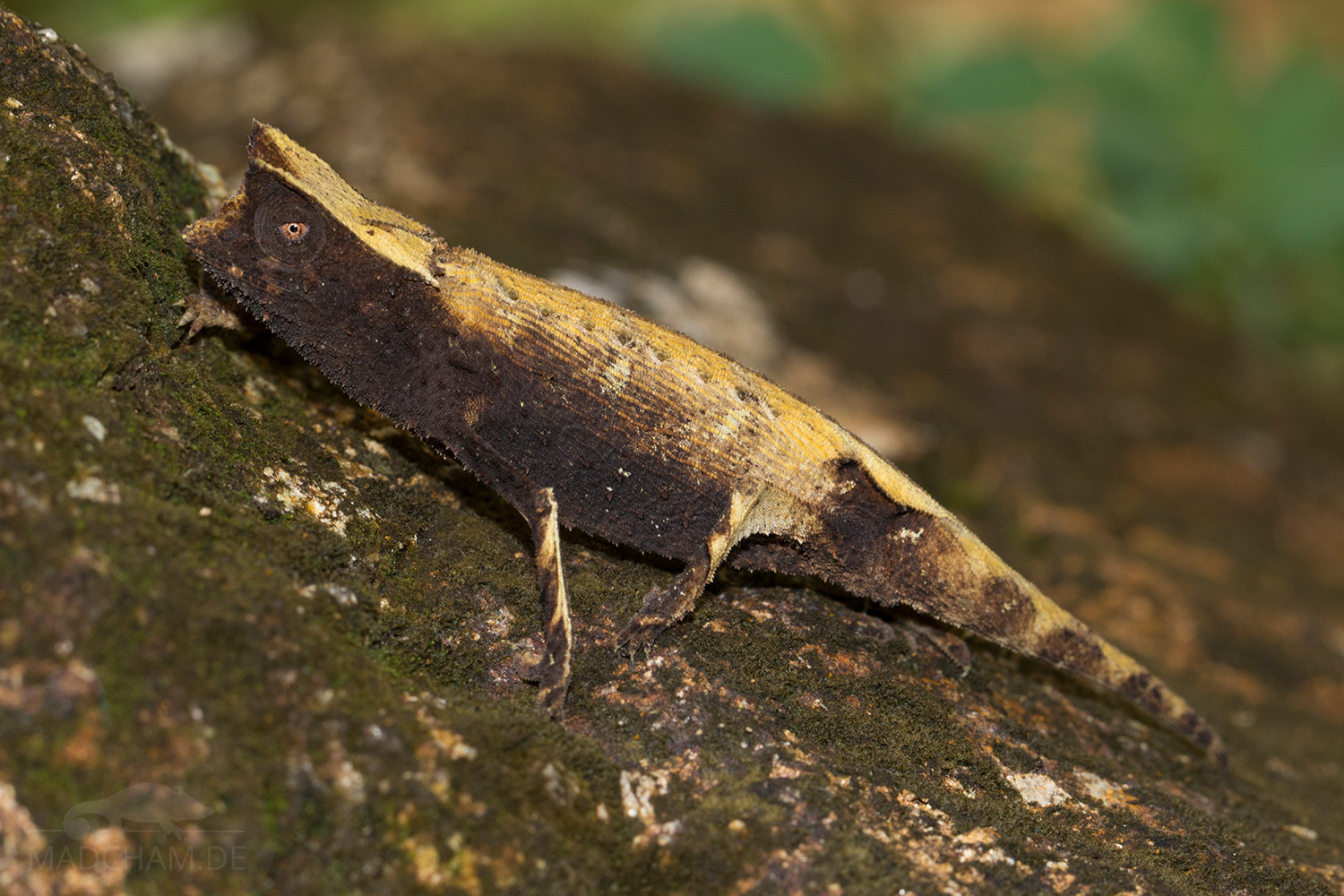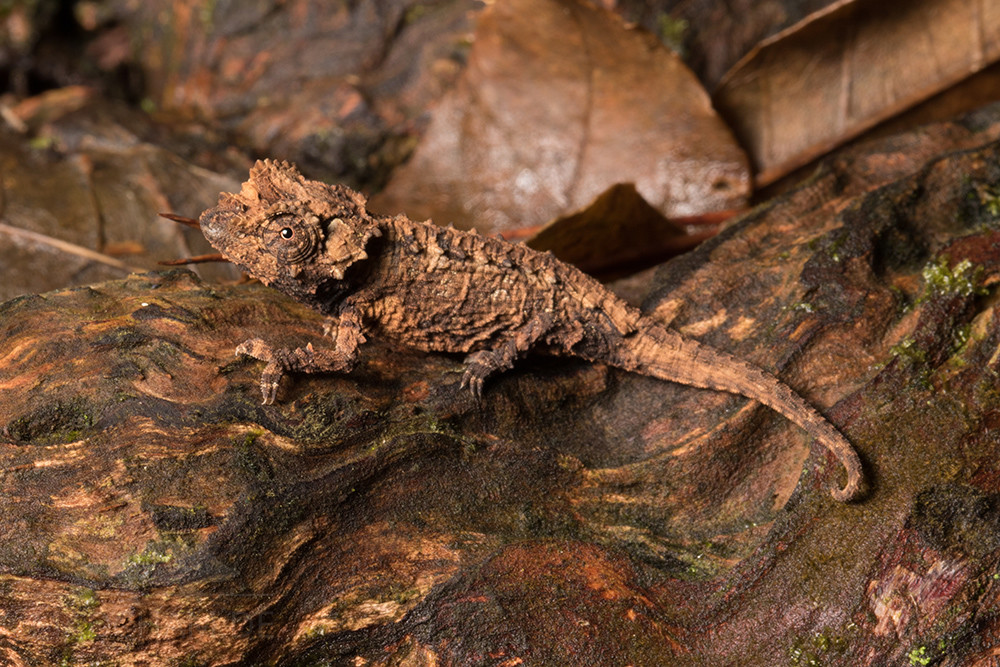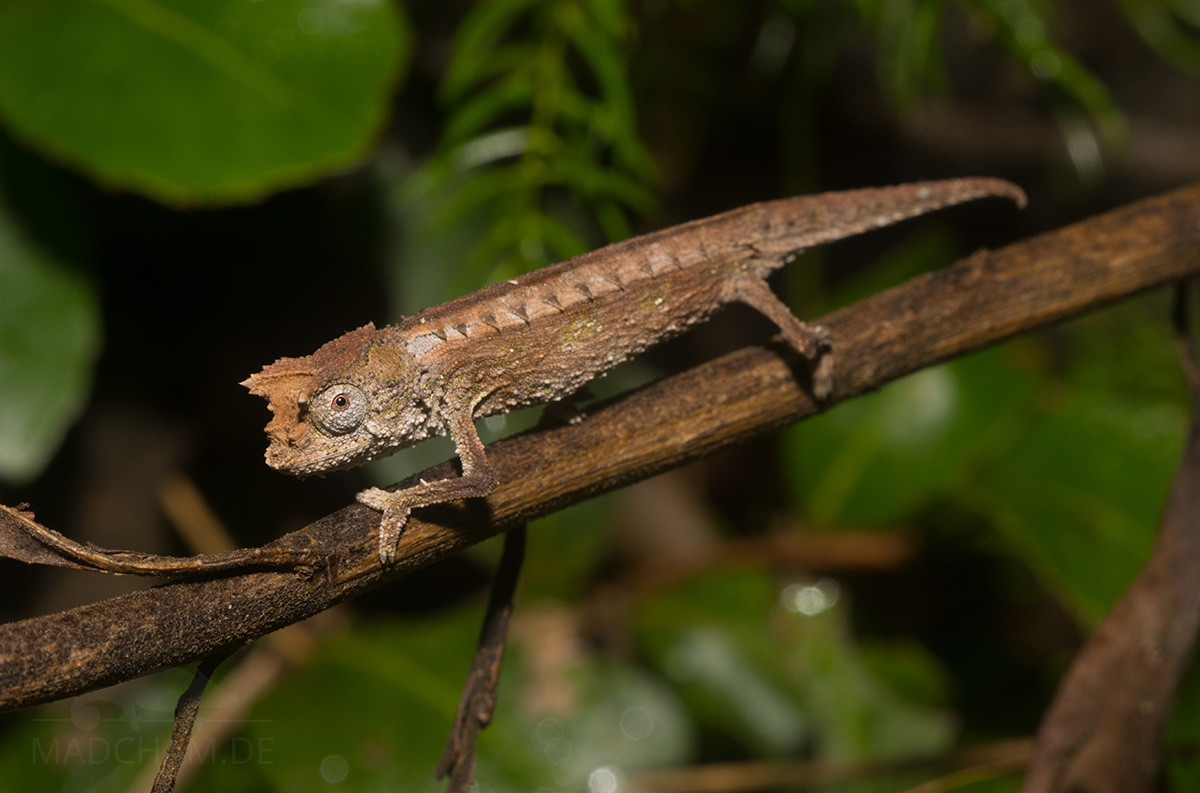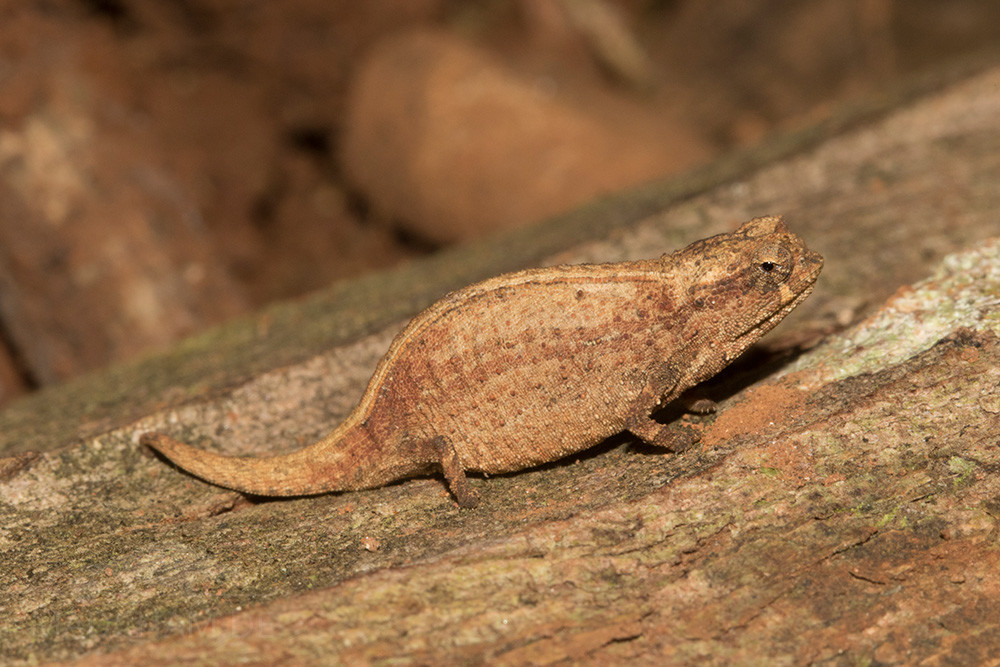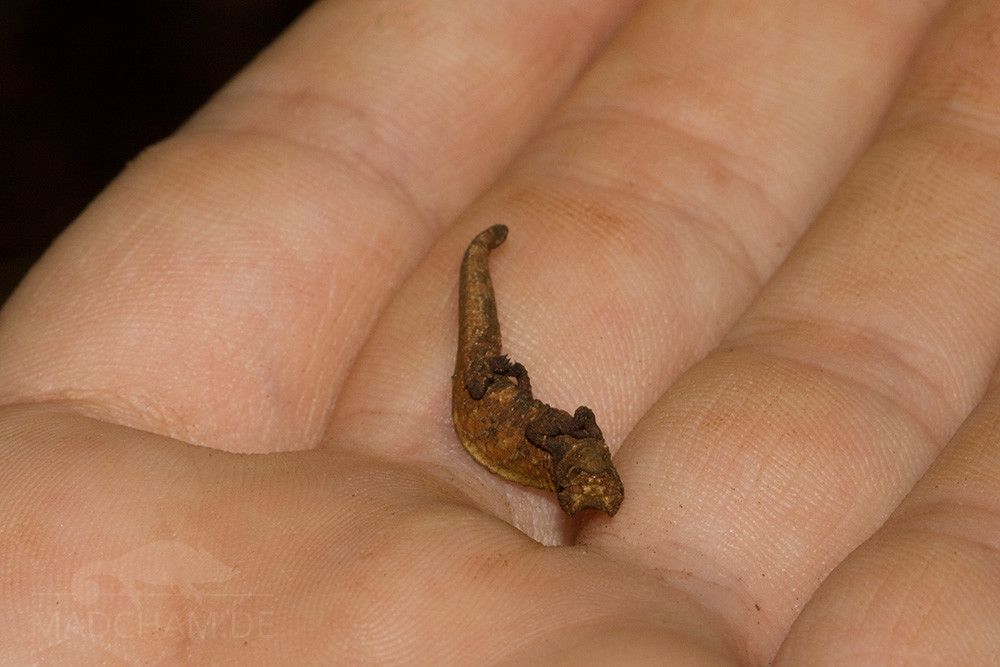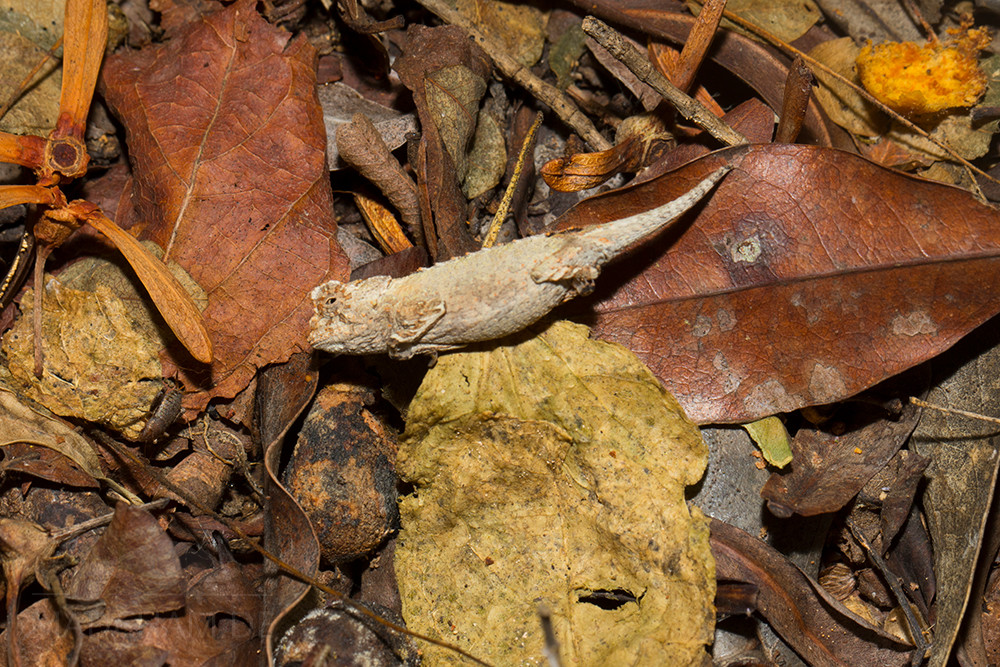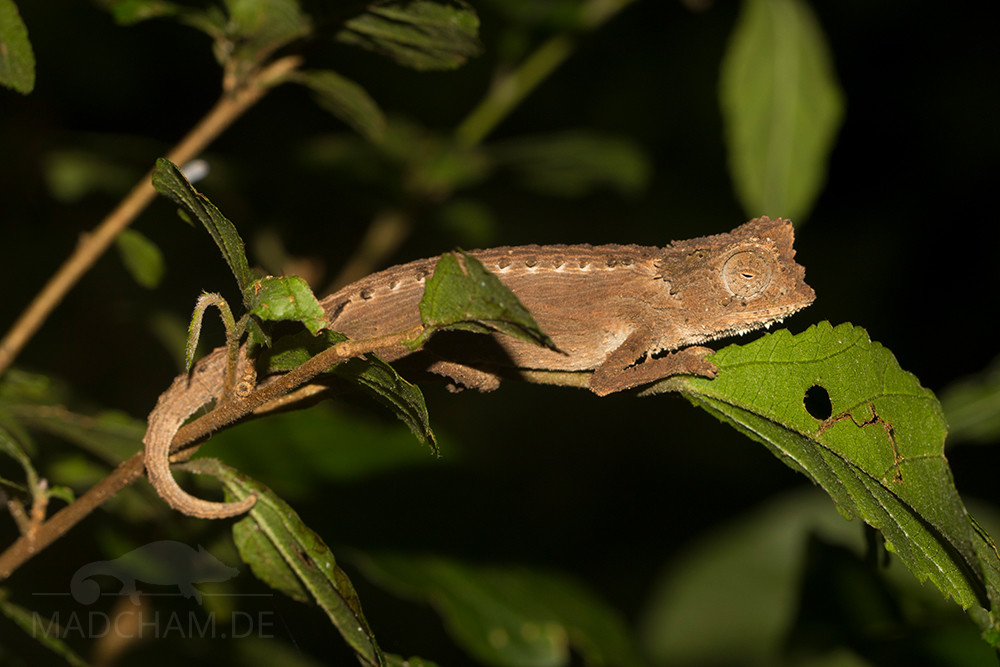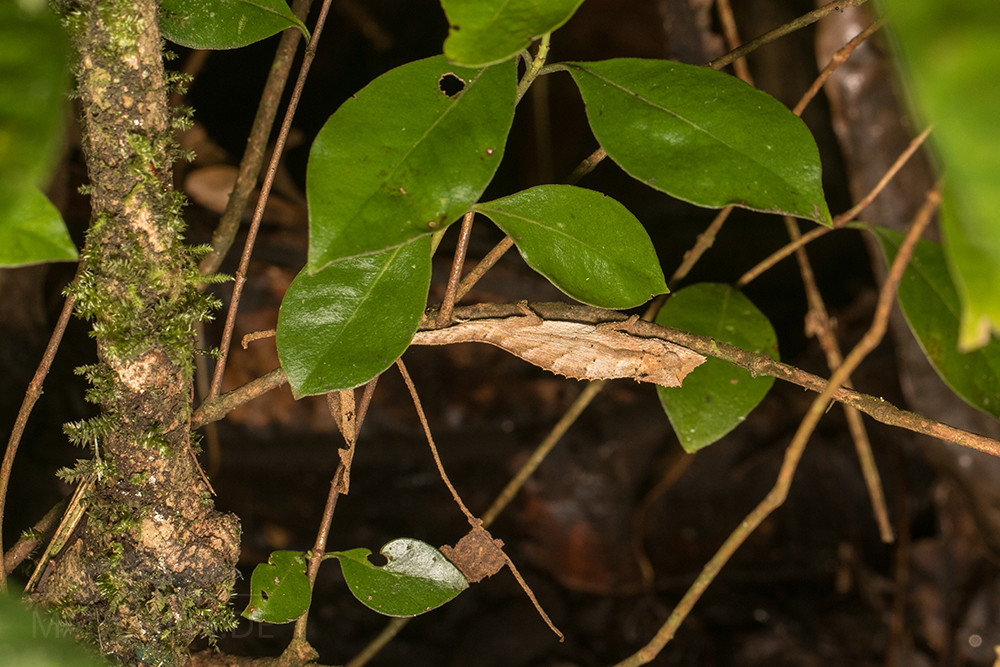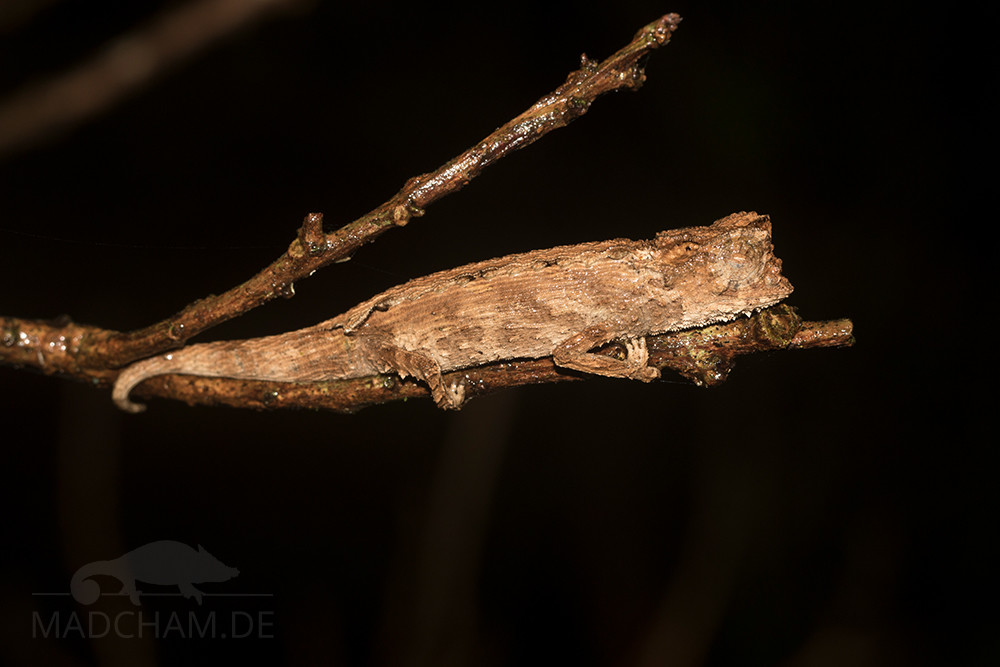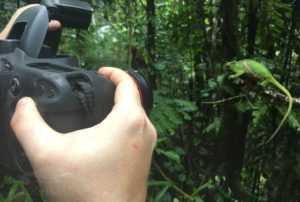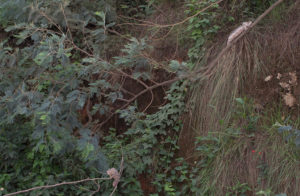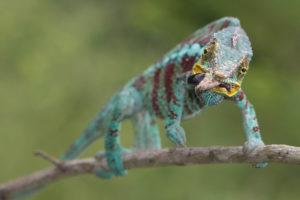Madagascan leaf chameleons of the genera Brookesia and Palleon are quite special – also and in particular with regard to their defensive behavior against predators. Because of their size and the less pronounced color diversity in contrast to the tree-dwelling chameleons of Madagascar, they have developed very special behavior to protect themselves from predators.
Escape
A simple strategy to avoid an unpleasant situation: Run away. Some leaf chameleons try to run away in a hurry before they think of other defense mechanisms. Although leaf chameleons cannot “run” really fast, they can move surprisingly quick on the ground under the thick layer of leaves and thus at least out of sight.
Freeze
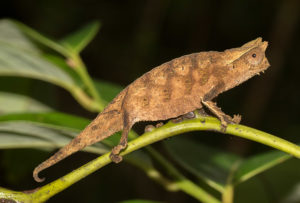
Brookesia superciliaris in Ranomafana which stopped directly in motion when the photographer was seen
Many leaf chameleons react to touch or grasp with a typical immobilization behavior. They do not move on but freeze in the middle of their movement. Only by the eyes, you can see that the leaf chameleon is watching its environment with tension. Many predators lose interest in their prey when it suddenly stops moving. Immobilization, therefore, makes sense in order to escape potentially dangerous situations unharmed. If nothing else happens, the chameleon walks on after a few minutes. Like larger chameleons, the chameleon moves back and forth in a back and forth motion to imitate a leaf swaying in the wind.
Freeze and roll
Many terrestrial chameleons like Brookesia antakarana, Brookesia minima, Brookesia peyrierasi or Brookesia confidens have a very specific pattern of behavior when touched: They pull arms and legs to their body and let themselves fall with a rolling body movement. It does not matter whether they fall from a tree trunk or from a branch. Due to their lower body weight and the inflatable air sacs, the chameleons usually do not get hurt. It is assumed that leaf chameleons use it to imitate leaves or small branches that are accidentally touched by the predator and accidentally fall off. In most cases, the leaf chameleon continues to run on the ground after a few seconds. We have observed this behavior very often in Madagascar. It occurs in almost all Brookesia species, but with very different degrees of severity in each individual. Some leaf chameleons use this escape behavior even with the smallest disturbance, with others it can hardly be provoked.
Vibration
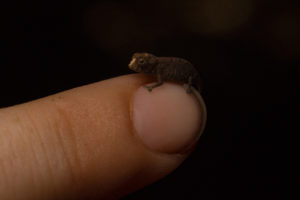
Even those dwarfs from Nosy Hara can vibrate
If a leaf chameleon is taken into the mouth by a predator or lifted by humans with their fingers, apparently contactless defense mechanisms such as freezing or rolling away have not worked. At this moment leaf chameleons often use vibration of the entire body. If you hold the animal in your hand, it feels a bit like a vibrating mobile phone. It is estimated that the frequency of the vibration is 10 to 50 Hertz and is thought to be generated by the muscles between the ribs. Probably this unusual behavior is intended to irritate the predator so that it spontaneously releases the chameleon. This offers the leaf chameleon the opportunity to escape. By the way, the size of the species is not important for this behavior. In Brookesia micra, the smallest chameleon in the world, we have already experienced the same vibration as in Madagascar’s largest leaf chameleon, Brookesia superciliaris.
Dorsal flattening
The so-called dorsal flattening is rather unusual, but can be observed again and again in leaf chameleons. In contrast to tree-dwelling chameleons, which enlarge their body upwards and downwards when threatened and look like a thin disc from the front, leaf chameleons behave in exactly the opposite way. They press their abdomen closer to their back and move their ribs further outwards to look like “flattened”. Probably they try to make themselves more look like a dead leaf. We have already observed this behavior in Brookesia stumpffi and Brookesia thieli .
Spine thrusting
If a larger leaf chameleon is fixed between the fingers, some individuals show another defense mechanism: The whole body moves in waves, whereby the dorsolateral tubercle scales are repeatedly pressed outwards. The animal literally “shakes” back and forth. It is assumed that this behavior is intended to make the predator, like birds, let go of the leaf chameleon in fright and thus enable it to escape.
Dead man’s reflex
All earth chameleons on Madagascar use the so-called akinesia as a last resort to escape a threatening situation. Akinesia comes from the ancient Greek kínēsis, which with the a in front means “no movement”. This is exactly what happens: The leaf chameleon pulls arms and legs tightly against the body and lets itself fall (without rolling), no matter where it is. It closes its eyes and does not move anymore. Few animals even open their mouths and push the hyoid slightly forward to simulate a death that looks as real as possible. For many predators, movement is crucial – if a potential prey stops moving, it immediately becomes uninteresting. If one waits and observes the earth chameleon, the eyes move again after a few seconds. The chameleon checks whether “the coast is clear again”. If the predator is already gone, it gets up and continues to walk normally.
Elevated sleeping position
Although with a few exceptions, all leaf chameleons are mainly on the ground during the day, they do not sleep in the leaves at night. They look for blades of grass, thin branches or plants as a place to sleep. In young animals, the sleeping place is usually only ten centimeters above the ground, adult leaf chameleons sometimes sleep at a height of one to one and a half meters. This elevated sleeping position protects the small chameleons from nocturnal predators on the ground, such as rummaging snakes or tenrecs. The following photos show individuals of Palleon nasus and Brookesia antakarana exactly as we found them sleeping at night in the rainforests of Ranomafana and Amber Mountain.

